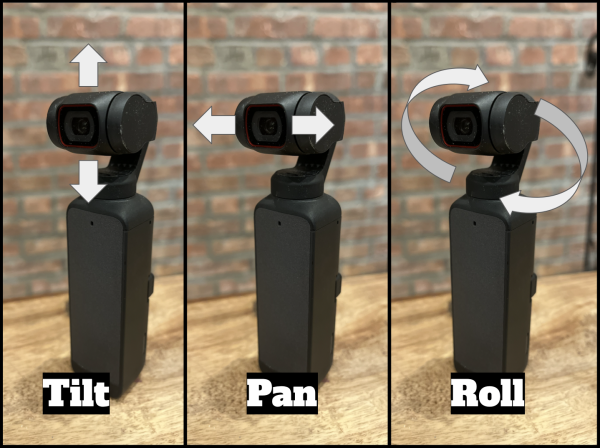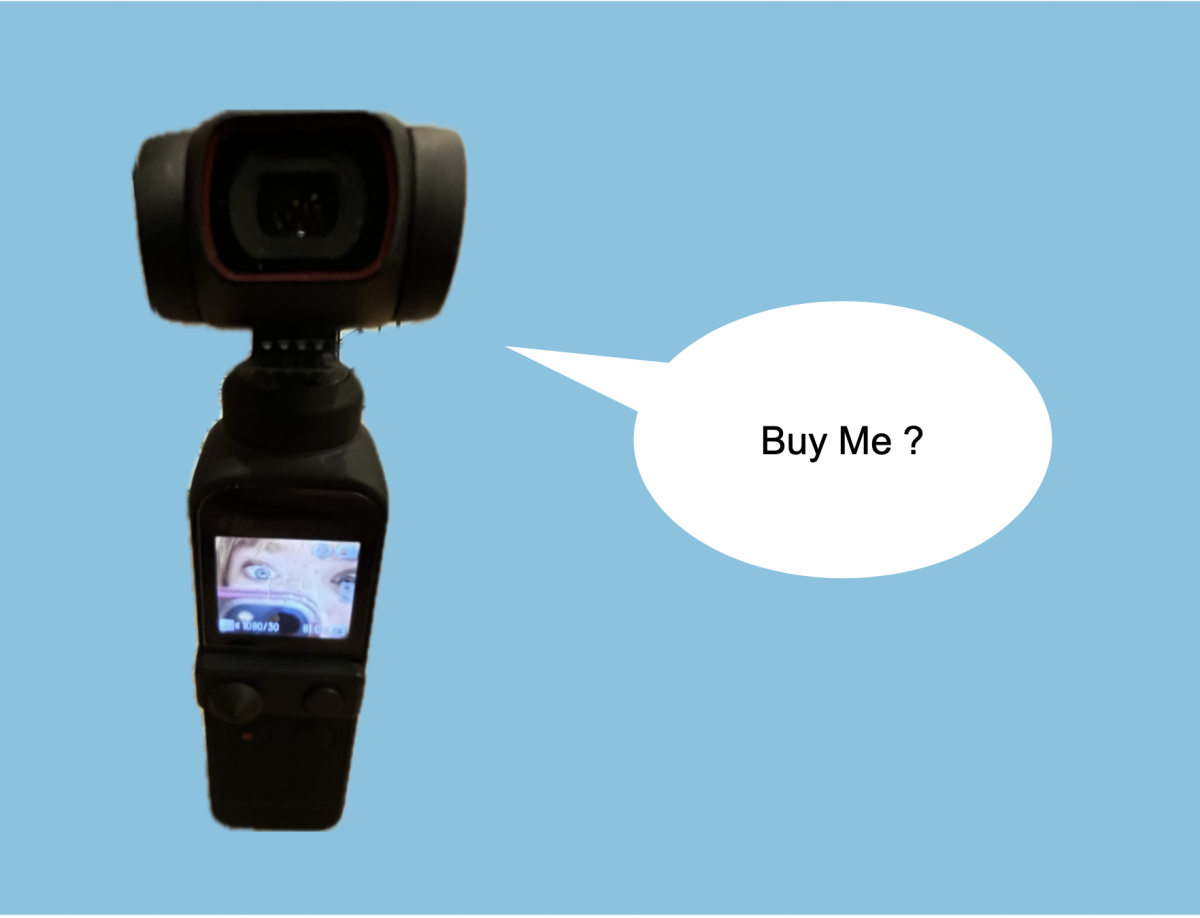This is corny, but the famed American journalist Joan Didion is the reason I dropped $200 on a pocket-sized, gimbal-stabilized, handheld camera on Ebay.
More specifically, I was attracted to an essay of hers, On Keeping a Notebook, where she justifies her far more cost-effective version of my Pocket 2. Our ultimate and shared goal is, however, to simply capture the smallest slices of life, immortalizing the moments that give it character.
In Didion’s essay ‘On Keeping a Notebook,’ she writes, “I think we are well advised to keep on nodding terms with the people we used to be… we forget all too soon the things we thought we could never forget. We forget the loves and the betrayals alike, forget what we whispered and what we screamed, forget who we were.”
With that said, I am now approaching the fun part of my senior year, and my new resolve is to capture these small moments, so I can confidently close this chapter, and reminisce authentically on it later.
However, unlike Didion, notebooks are not my speed. I find them uninspiring and always spill coffee on them. Video, on the other hand, is more engaging to create, re-live, and is a great way to share memories with friends. I knew that I was in the market for a camera, so my only question was which one.
Why the Pocket 2?
I fell in love with the Pocket 2 at first sight. Its allure derives from the near cinema-quality footage it can produce in a frame that is less than 5 inches x 2 inches x 1 inch in volume; easily sliding into any pocket, hence the name.
The reason behind this great video quality is that the camera-piece itself is mounted on a 3-axis gimbal. This is a mechanism that stabilizes this above camera from movement in any direction of the user that holds the below body of the device. A joystick on the body of the Pocket 2 also controls the gimbal-mounted-camera so that it can smoothly tilt up and down, and pan left and right. These movements also mimic those of a cinema camera. The videos that are produced are very sharp and aesthetically pleasing, especially when compared to the quality of your average smartphone footage.
There is also something to be said for having a device wholly devoted to capturing memories. Most of us scroll through hundreds of extraneous, smartphone-recorded moments a day on social media, so when it comes to recording our own small moments, or re-living them down the road in that unremarkable, smartphone grain, the process loses its romance.
The Pocket 2 is small and rugged, and accompanies me on all my adventures, down ski slopes and Bronx Science hallways and everything in between. With many hours of experience now put in, I will proceed to chronicle my experience capturing the small moments with my DJI Pocket 2 so far, categorized by its different features.
Four Stabilization Modes
The Pocket 2 has four shooting modes, with each of the four targeting a different combination of the 3-axes of the gimbal: the tilt axis (rotating up and down), the pan axis (rotating left and right), and the roll axis (rotating clockwise and counterclockwise).

The first shooting mode, FPV (‘First Person View’) operates such that the camera rotates across all three axes, corresponding directly to the hand movements of the cameraperson. It should be noted that a sharp movement made in any direction with the Pocket 2 in hand is dampened by the gimbal, which is among my favorite features of this camera because the resulting footage appears much smoother and cinematic.
The second mode is the Follow mode, where the camera only rotates along the tilt and pan axes, and locks on the roll axis, meaning that any hand movement clockwise or counterclockwise is counteracted by the gimbal and is not detected. I normally shoot in this mode because I find this footage to most resemble real life, since our necks typically rotate up, down, left and right, and rarely rotate along a clockwise or counterclockwise axis.
The Tilt Locked mode is locked on both the tilt and roll axes, such that only movement left and right is detected. Finally, the Lock mode is locked on all three axes, best used when the cameraperson wants to focus on a stationary subject or stretch of landscape. Unlike the former three modes that can be toggled between with one simple button, the Lock mode is achieved by holding this same button down for a duration of a bit over a second. I find this a very convenient way to access this shooting mode because I can transition smoothly and easily from a pan, tilt or roll in any direction to a stationary shot of anything that may catch my eye, just as drifting human eyes often lock onto a subject of interest after scanning their surroundings.
Joystick and Bluetooth Controls
There are other methods of controlling the Pocket 2 aside from simply where one points the camera. A common way to do this, which I briefly mentioned prior, is by using the included joystick to control pans and tilts, which toggles it in the desired direction.
Another method is by connecting your smartphone to the DJI Mimo app, which turns your phone screen into a much larger version of the Pocket 2’s monitor, which couldn’t be more than a square inch in area. Shots are much easier to compose with the larger screen. The app’s interface also has joystick controls so that anyone using the app can remotely control their camera’s pans and tilts, just like the real joystick.
Connecting the Pocket 2 to the mobile app can be done by either using an attachment (one is included with the camera) in which a smartphone insert slides into the shaft where the camera’s joystick is normally kept. Another way to do this is to buy a bluetooth attachment that latches onto the bottom of the camera’s body, tacking on an extra inch of length.
Additional Features
There are a few other features of the DJI Pocket 2 to highlight that I feel wrong not to include. One of these is the camera’s brilliant performance in lowlight conditions, and despite it not having a flash, footage shot at night time still retains a very high quality.
The Pocket 2 also has an Active Tracker mode, which allows you to select a particular person as a subject. The camera will automatically follow this person’s movements, keeping them in the center of the frame. The DJI takes great time-lapses and slo-mos, as well as very vibrant and crisp photographs.
Some Experiences and Feedback
I am really happy with the shots I got on my DJI Pocket 2 Camera. I found the device playful and fun to use, and people get a kick out of it when they first see it.
I also appreciate how user friendly the camera is. “After a few minutes of getting to know the controls, I could take videos far more exciting than my iPhone with similar ease,” said my friend Rhiannon Chaston ’24.
I have a few complaints. The device is slightly difficult to get out of its case, which can be frustrating when I needed to shoot something quickly. The storage space for the camera’s wide angle lens is magnetized section within this case, but this magnet is not very strong, and I lost the lens within a few months. Also, the joystick broke off of the camera at some point. However, I luckily was able to fish it out of my pocket, and it easily clicked back into place.
Whether the Pocket 2’s better video quality and additional features outweighs the accessibility of today’s smartphones is up to you. Below are some sample clips to you to decide.
Sample Clips
Is this the right camera for you?
The DJI Pocket 2 is not a camera for everyone; it’s for the adventurer, the storyteller, the person who wants to kick their filmmaking skills up a notch, or record memories with a bit of edge to them.
The camera is for someone who doesn’t mind carrying the extra weight that can do almost everything their smartphone can. They must be sold to the slight benefits the camera provides, as well as the vision of how they will use it.
“After a few minutes of getting to know the controls, I could take videos far more exciting than my iPhone with similar ease,” said my friend Rhiannon Chaston ’24.

